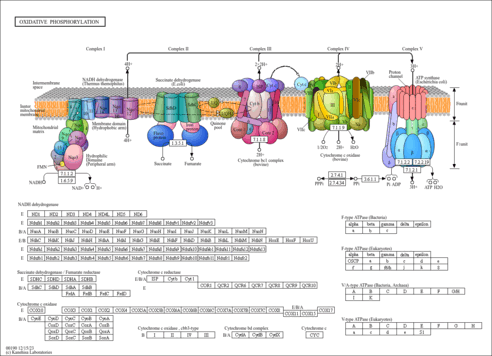| Identification |
|---|
| YMDB ID | YMDB00207 |
|---|
| Name | Copper(2+) |
|---|
| Species | Saccharomyces cerevisiae |
|---|
| Strain | Baker's yeast |
|---|
| Description | Copper, also known as cu(ii) or copper (II) ion, belongs to the class of inorganic compounds known as homogeneous transition metal compounds. These are inorganic compounds containing only metal atoms,with the largest atom being a transition metal atom. Copper is a weakly acidic compound (based on its pKa). Copper exists in all living species, ranging from bacteria to humans. Copper is a potentially toxic compound. |
|---|
| Structure | |
|---|
| Synonyms | - COPPER (II) ION
- copper, ion (Cu2+)
- copper(II) cation
- Cu(2+)
- Cu(II)
- Cu2+
- cupric ion
- Cu
|
|---|
| CAS number | 15158-11-9 |
|---|
| Weight | Average: 63.546
Monoisotopic: 62.929601079 |
|---|
| InChI Key | JPVYNHNXODAKFH-UHFFFAOYSA-N |
|---|
| InChI | InChI=1S/Cu/q+2 |
|---|
| IUPAC Name | copper(2+) ion |
|---|
| Traditional IUPAC Name | copper(2+) ion |
|---|
| Chemical Formula | Cu |
|---|
| SMILES | [Cu++] |
|---|
| Chemical Taxonomy |
|---|
| Description | belongs to the class of inorganic compounds known as homogeneous transition metal compounds. These are inorganic compounds containing only metal atoms,with the largest atom being a transition metal atom. |
|---|
| Kingdom | Inorganic compounds |
|---|
| Super Class | Homogeneous metal compounds |
|---|
| Class | Homogeneous transition metal compounds |
|---|
| Sub Class | Not Available |
|---|
| Direct Parent | Homogeneous transition metal compounds |
|---|
| Alternative Parents | Not Available |
|---|
| Substituents | - Homogeneous transition metal
|
|---|
| Molecular Framework | Not Available |
|---|
| External Descriptors | |
|---|
| Physical Properties |
|---|
| State | Not Available |
|---|
| Charge | 2 |
|---|
| Melting point | Not Available |
|---|
| Experimental Properties | | Property | Value | Reference |
|---|
| Water Solubility | Not Available | PhysProp | | LogP | Not Available | PhysProp |
|
|---|
| Predicted Properties | |
|---|
| Biological Properties |
|---|
| Cellular Locations | - Cytoplasm, Golgi Apparatus
|
|---|
| Organoleptic Properties | Not Available |
|---|
| SMPDB Pathways | |
|---|
| KEGG Pathways | |
|---|
| SMPDB Reactions | Not Available |
|---|
| KEGG Reactions | Not Available |
|---|
| Concentrations |
|---|
| Intracellular Concentrations | |
|---|
| Extracellular Concentrations | | Intracellular Concentration | Substrate | Growth Conditions | Strain | Citation |
|---|
| 1 ± 0 µM | hops, malted barley | anaerobic | Baker's yeast | Alcoholic beverage, beer, regular, all - U.S. Department of Agriculture, Agricultural Research Service. 2010. USDA National Nutrient Database for Standard Reference, Release 23. Nutrient Data Laboratory Home Page | | 2 ± 0 µM | grape juice | anaerobic | Baker's yeast | Alcoholic beverage, wine, table, red - U.S. Department of Agriculture, Agricultural Research Service. 2010. USDA National Nutrient Database for Standard Reference, Release 23. Nutrient Data Laboratory Home Page | | Conversion Details Here |
|
|---|
| Spectra |
|---|
| Spectra | | Spectrum Type | Description | Splash Key | View |
|---|
| Predicted LC-MS/MS | Predicted LC-MS/MS Spectrum - 10V, Positive | splash10-03di-9000000000-59c652eccc13cc365f65 | JSpectraViewer | | Predicted LC-MS/MS | Predicted LC-MS/MS Spectrum - 20V, Positive | splash10-03di-9000000000-59c652eccc13cc365f65 | JSpectraViewer | | Predicted LC-MS/MS | Predicted LC-MS/MS Spectrum - 40V, Positive | splash10-03di-9000000000-59c652eccc13cc365f65 | JSpectraViewer | | Predicted LC-MS/MS | Predicted LC-MS/MS Spectrum - 10V, Negative | splash10-03di-9000000000-9acd78ab9faeb89677a7 | JSpectraViewer | | Predicted LC-MS/MS | Predicted LC-MS/MS Spectrum - 20V, Negative | splash10-03di-9000000000-9acd78ab9faeb89677a7 | JSpectraViewer | | Predicted LC-MS/MS | Predicted LC-MS/MS Spectrum - 40V, Negative | splash10-03di-9000000000-9acd78ab9faeb89677a7 | JSpectraViewer |
|
|---|
| References |
|---|
| References: | - UniProt Consortium (2011). "Ongoing and future developments at the Universal Protein Resource." Nucleic Acids Res 39:D214-D219.21051339
- Alcoholic beverage, beer, regular, all - U.S. Department of Agriculture, Agricultural Research Service. 2010. USDA National Nutrient Database for Standard Reference, Release 23. Nutrient Data Laboratory Home Page
- Alcoholic beverage, wine, table, red - U.S. Department of Agriculture, Agricultural Research Service. 2010. USDA National Nutrient Database for Standard Reference, Release 23. Nutrient Data Laboratory Home Page
- Rae, T. D., Schmidt, P. J., Pufahl, R. A., Culotta, V. C., O'Halloran, T. V. (1999). "Undetectable intracellular free copper: the requirement of a copper chaperone for superoxide dismutase." Science 284:805-808.10221913
|
|---|
| Synthesis Reference: | Not Available |
|---|
| External Links: | |
|---|

